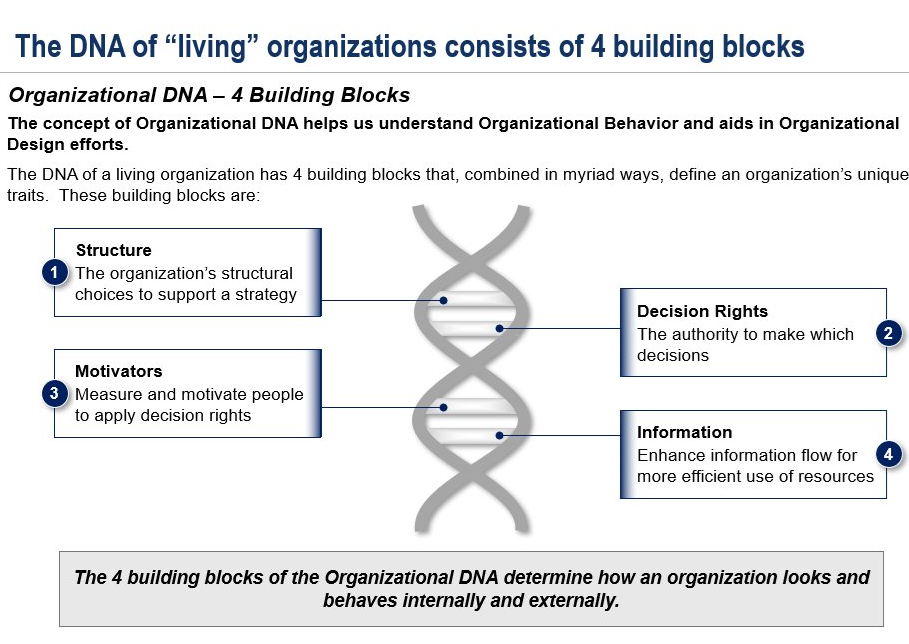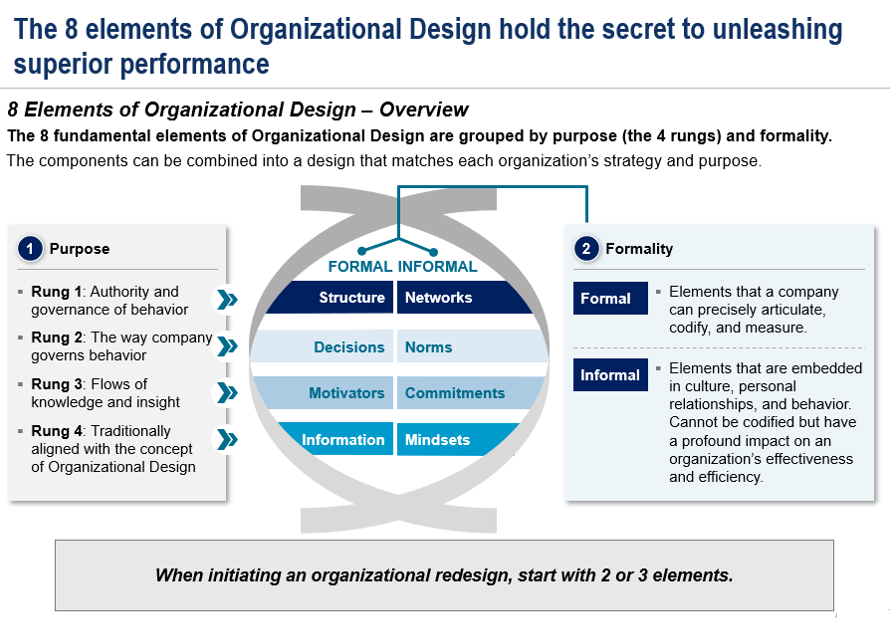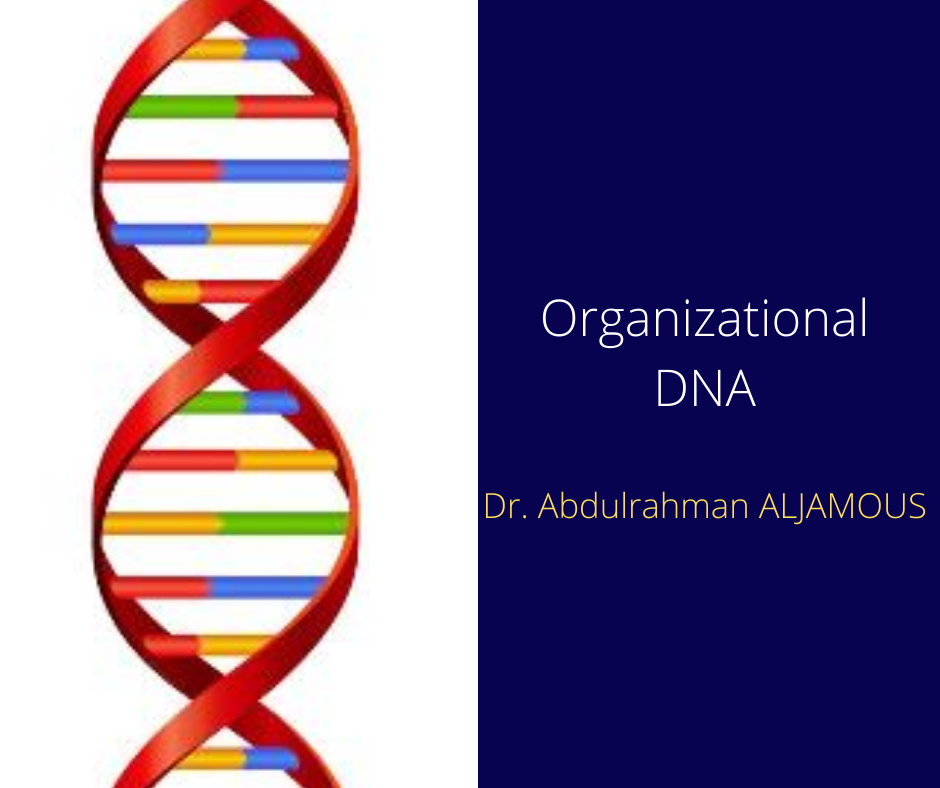Organizational DNA
Organizational DNA
Dr. Abdulrahman ALJAMOUS
Organizational DNA is defined as the underlying factors that together define an organization’s “personality” and help explain its performance.
Corporate DNA or organizational DNA is a metaphor based on the biological term DNA, the molecule that encodes the genetic instructions in living organisms. Everything that a cell is and does comes from its DNA. The DNA informs and directs everything that happens to each cell in our bodies and through these cells directs what happens to the entire organism.

Organizations behave like organisms. Every single organization has a DNA. That DNA determines the direction of the organization and everything that the organization does. However, it does so within a constantly changing environment. If you are starting an organization and are tasked with describing and writing your organizational DNA, it’s important to remember that the DNA has to remain fairly constant even when times and circumstances are changing as the DNA is the organization’s purpose, calling, core beliefs and values that bind an organization together. Strategy is not part of the DNA of an organization, it is constantly changing (as it should) to adapt to changing times. Some people consider the organization’s vision to be part of the DNA of the organization. That’s possible but there are many limitations to that. For example, one can with the same purpose, calling, core beliefs and values come up with many different visions for the organization. Organizations that fulfill their visions often don’t have to shut down

Just as the double-stranded DNA molecule is held together by bonds between base pairs of four nucleotides, whose sequence spells out the exact instructions required to create a unique organism, we describe the DNA of a living organization as having four bases that, combined in myriad ways, define an organization’s unique traits. These bases are:
Structure. What does the organizational hierarchy look like? How are the lines and boxes in the organization chart connected? How many layers are in the hierarchy, and how many direct reports does each layer have?
Decision Rights. Who decides what? How many people are involved in a decision process? Where does one person’s decision-making authority end and another’s begin?
Motivators. What objectives, incentives, and career alternatives do people have? How are people rewarded, financially and nonfinancially, for what they achieve? What are they encouraged to care about, by whatever means, explicit or implicit?
Information. What metrics are used to measure performance? How are activities coordinated, and how is knowledge transferred? How are expectations and progress communicated? Who knows what? Who needs to know what? How is information transferred from the people who have it to the people who require it?
Any metaphor can be pushed too far, of course. Although the basic comparison of corporate and human DNA is often invoked in general discussions of institutional culture and conduct, we think it provides a practical framework senior executives can use to diagnose problems, discover hidden strengths, and modify company behavior. With a framework that examines all aspects of a company’s architecture, resources, and relationships, it is much easier to see what is working and what isn’t deep inside a highly complex organization, to understand how it got that way, and to determine how to change it.
